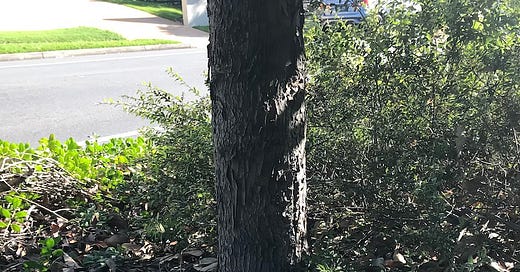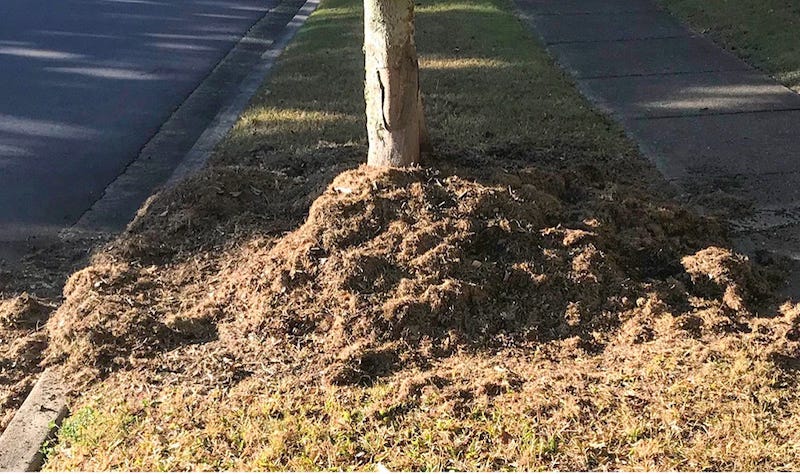Why doesn't the council plant more street trees?
I hear this question often and they are always surprised by the answer.
It was a brief conversation, two strangers filling in silences with polite conversation. It started with the weather and the crazy hot summer we’ve had.
“We need more street trees to reduce the heat”, I said. “And reduce skin cancer.” I thought that would resonate with a health professional.
A nod, and then that question: "Why doesn't the council just plant more street trees then?"
My answer: Because many residents refuse to have one in front of their property and if the council plants them anyway, they usually die or disappear.
Surprise, bemusement. “It might help if they planted nicer trees.”
I have had countless variations of that conversation.
More recently, environmental advocates talking about urban heat and walkability have joined the chorus. We need more trees for shade and cooling in our cities, so the councils should plant more street trees. Simple! The responsibility, and blame, for our treeless streets and verges is directed at councils.
If it were that simple, it would have been done long ago.
I agree councils are the best ones to plant and maintain street trees. That is standard policy and most councils are working to increase tree canopy. But they can’t do it alone. They can’t turn tree-refusers into tree-lovers..
What’s a nice tree?
This is the trunk of my street tree. It’s a beautiful tree (Lophostemon confertus) even if my tree-refusing neighbour disagrees.
A native verge garden around a tree is transformational. From a tree point of view, it thrives in all that ever-increasing biodiversity with its base protected from grass and mowing equipment and wind. The leaf litter caught in the understory contributes to the garden creating its own mulch.
This is a tree further down the street. Grass clippings piled around a trunk (volcano mulching) is bad for a tree’s health. It doesn’t do much for the appearance either. Nobody will pause to admire this tree, even if it survives. This is called volcano mulching because of the heat generated. The top of both trees reflects the state of their trunk.
Verge gardens can increase the health and appearance of street trees. A tree that looks ugly and unloved standing alone in flat grass could look interesting and attractive as a feature in a verge garden. As well as being better for biodiversity, native plants complement the appearance of our native trees.
It takes more to convert a tree-refuser
People are tree-refusers for deeper reasons than convenience. The way they view their streets and the role of verges plays a major role.
Here are some obvious reasons that people give:
I want to park my car or store my trailer/boat/caravan there
It’s annoying to have to mow around a tree
It will drop leaves on my lawn
Now we are getting into culture and social norms. There are no simple solutions. Instead, we start with questions. How might we move more people into imagining tree-lined, nature-filled streets as an integral part of a future they desire?
The Understanding The Space section of Shady Lanes is the first step in reflecting on what verges mean to you and to other people.
If you’re serious about bringing about the cultural changes needed for a sustainable future, check out the Group Projects section. The opportunities presented by verges are the key to this change. The skills and networks developed in a group verge garden project can be used in many other collaborations.
What is your Experience?
Would you refuse to have a street tree? What reasons have people given you for not wanting a street tree? Please share them with others in the comments.






Every tree needs a family of smaller plants to help it survive and thrive. No lawn mowing. More bees to pollinate your veggies and fruit tree.
Looks great.
Best all round solution.
I’m desperately keen to have verge trees and a garden there for biodiversity, heat management etc but our CC council does not have a verge plan.